Year 10 Surface Area and Volume Worksheets
Area and Volume of Similar Shapes (A)
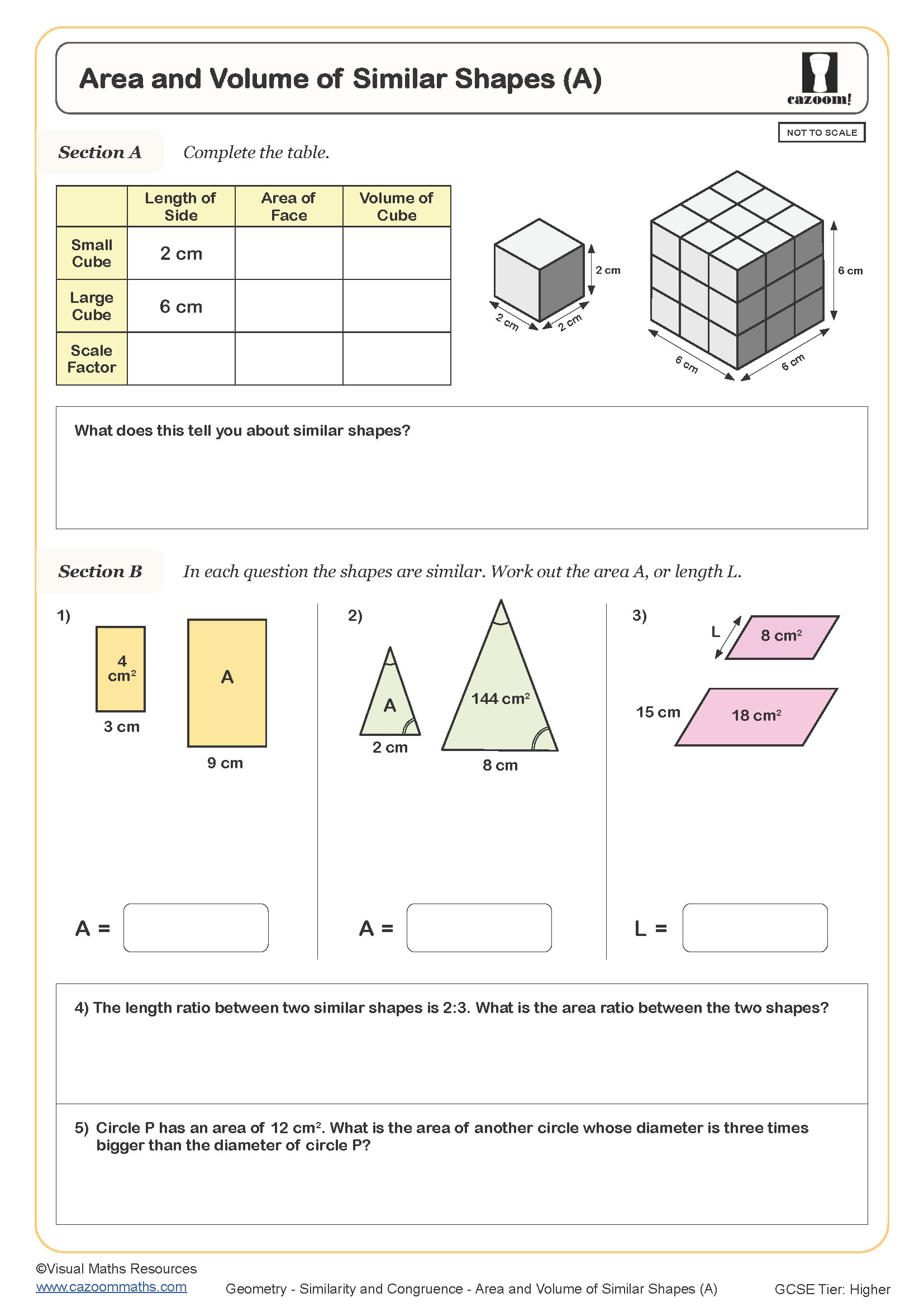
Area and Volume of Similar Shapes (B)
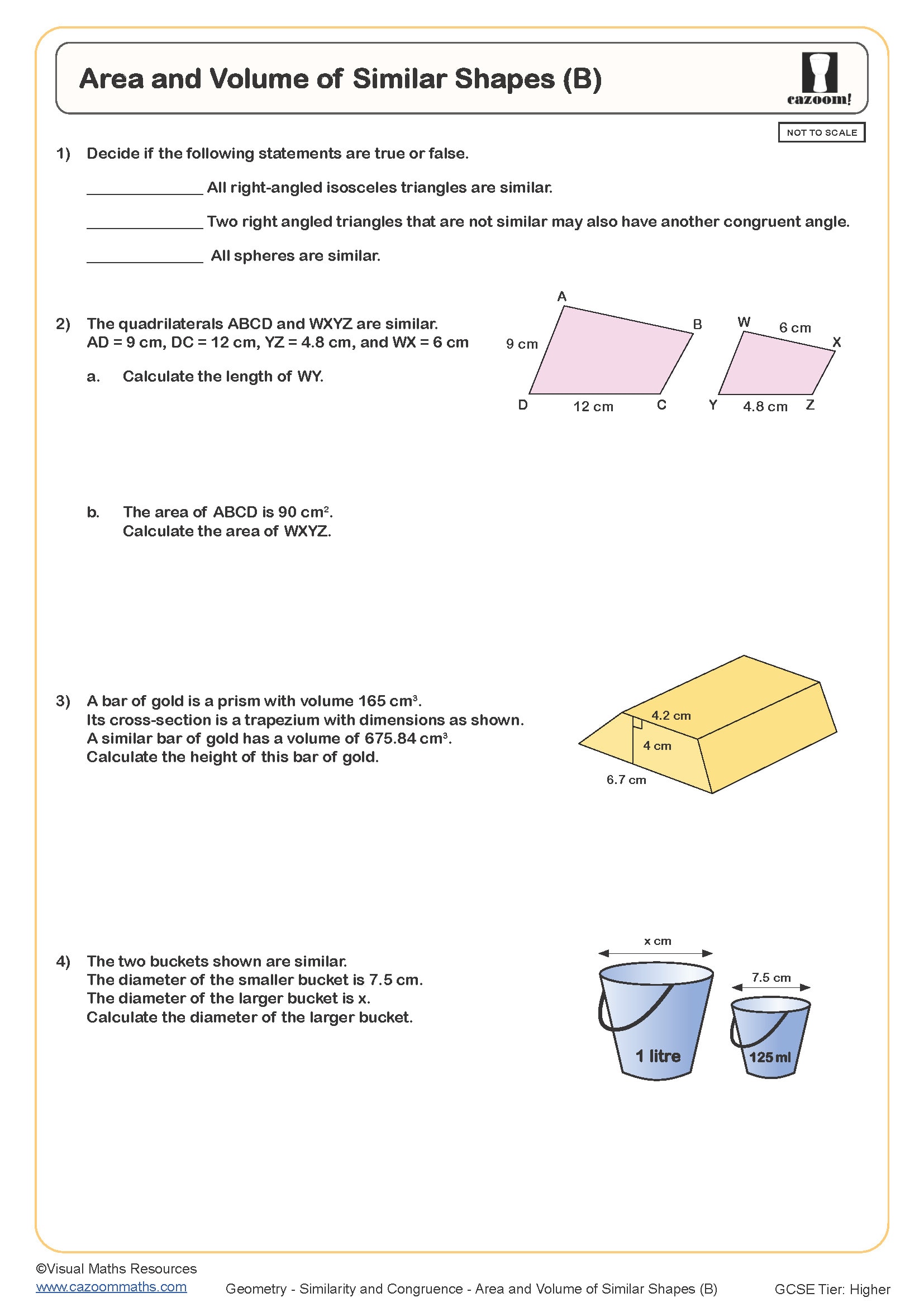
Formulae for Pyramids Cones and Spheres
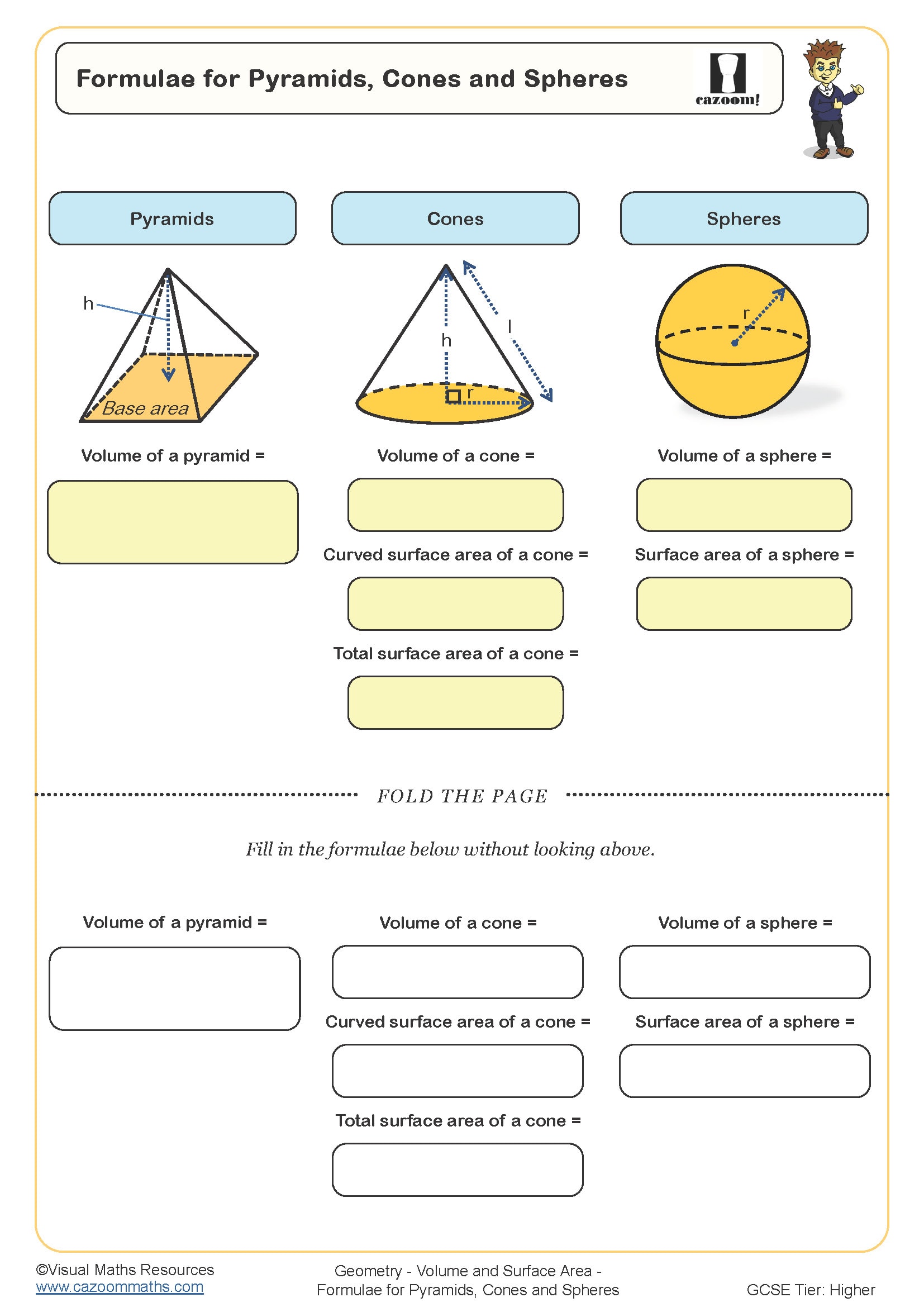
Frustums
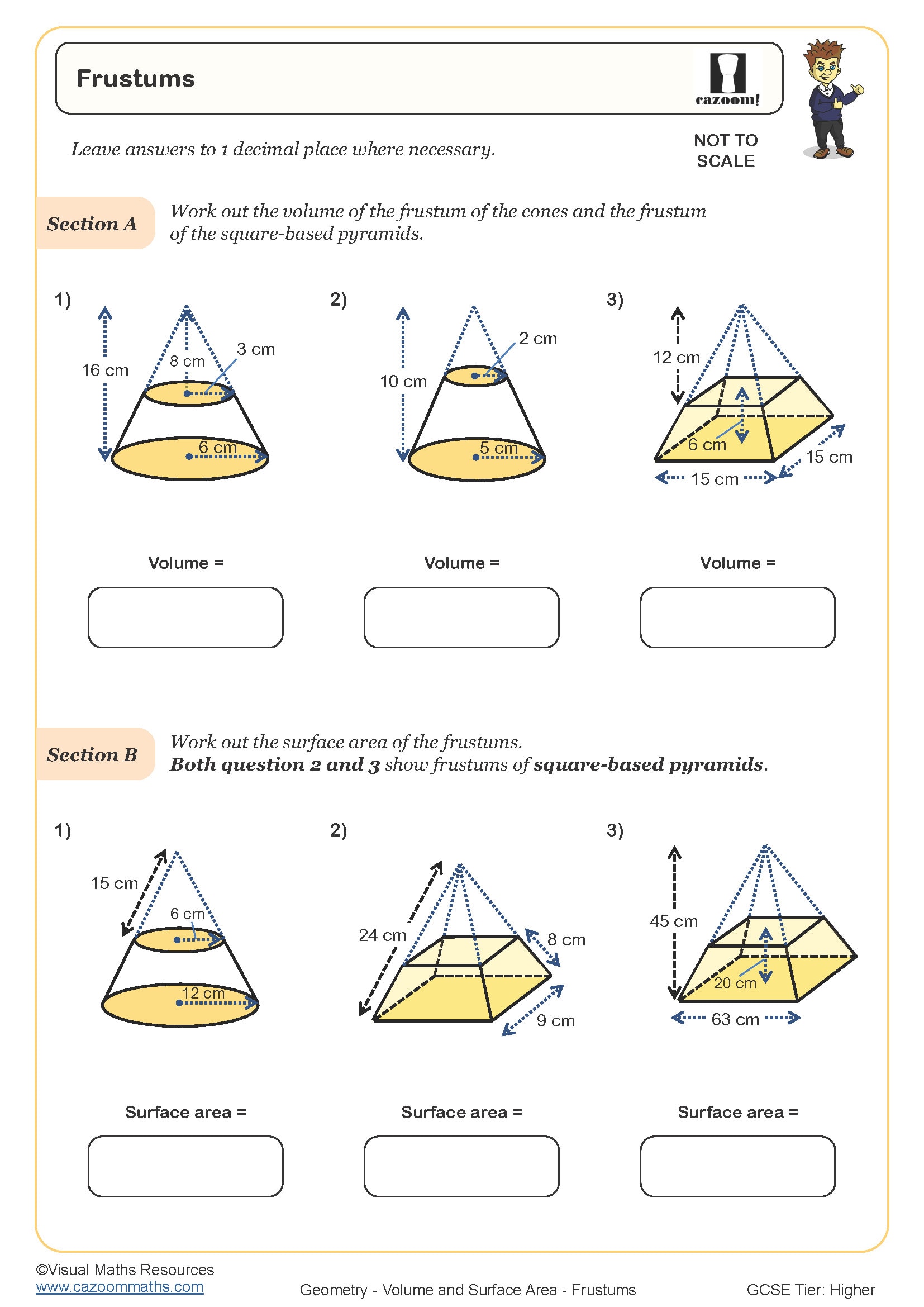
In Terms of Pi (C)
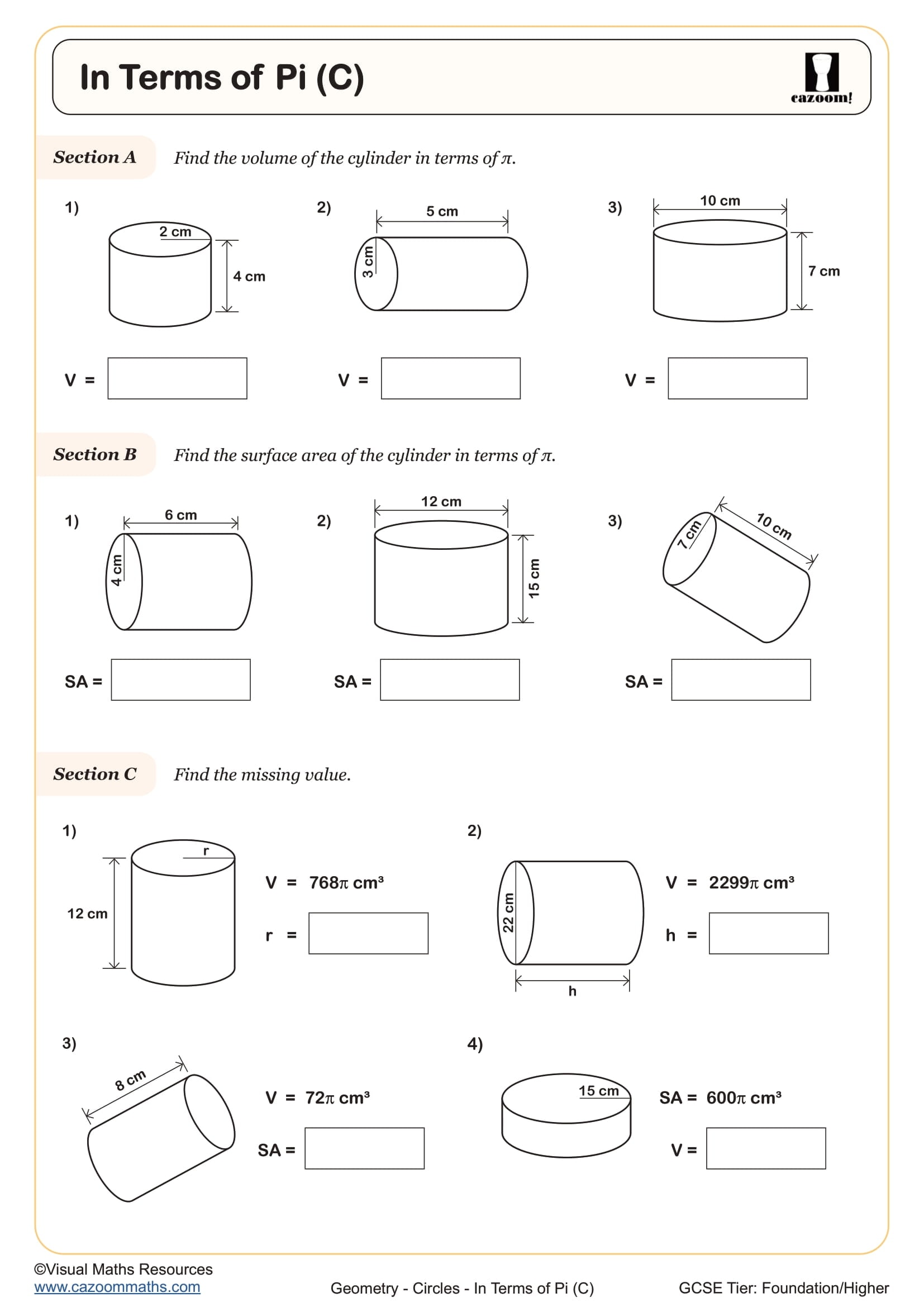
Recognising Prisms
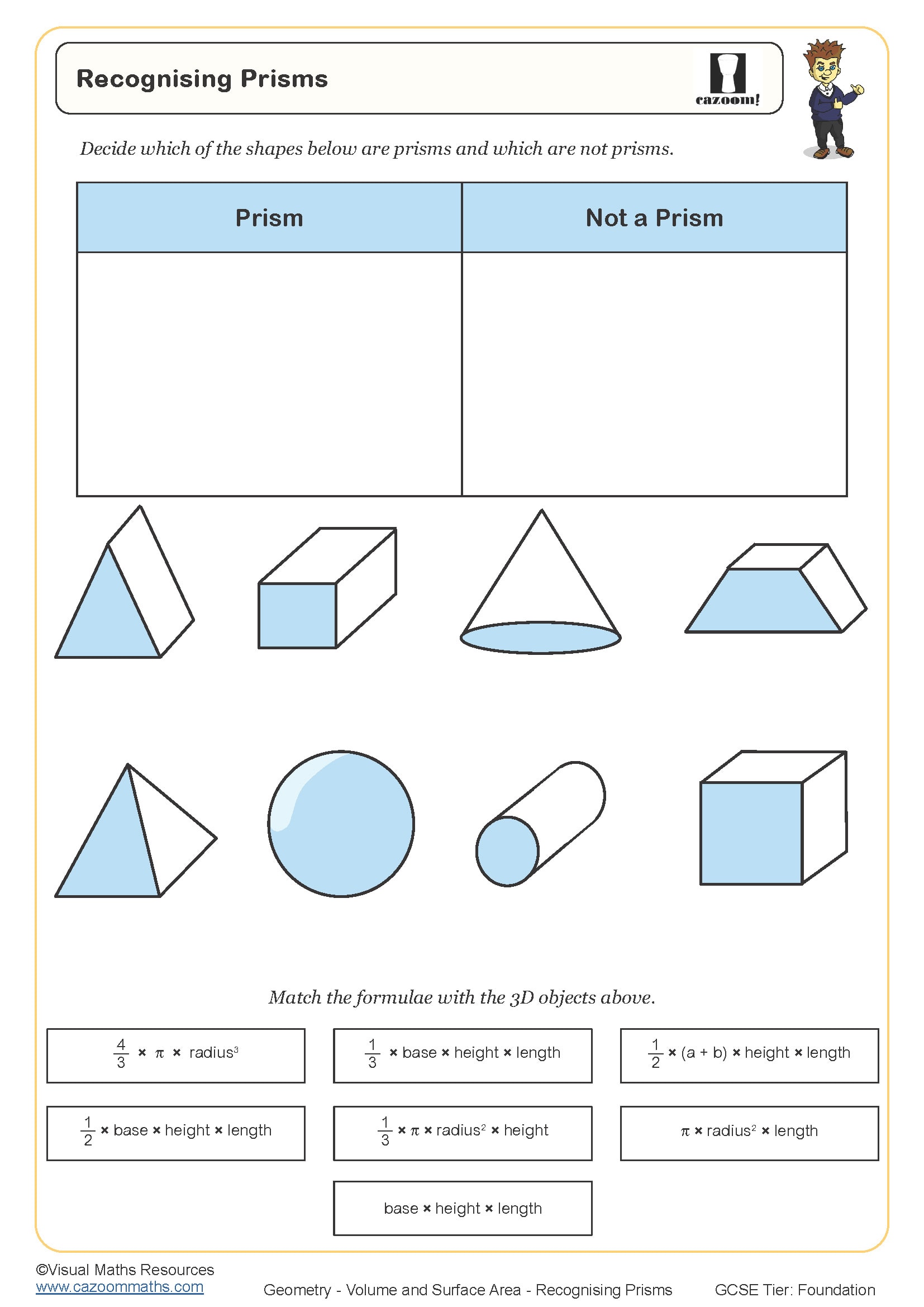
Surface Area of a Sphere
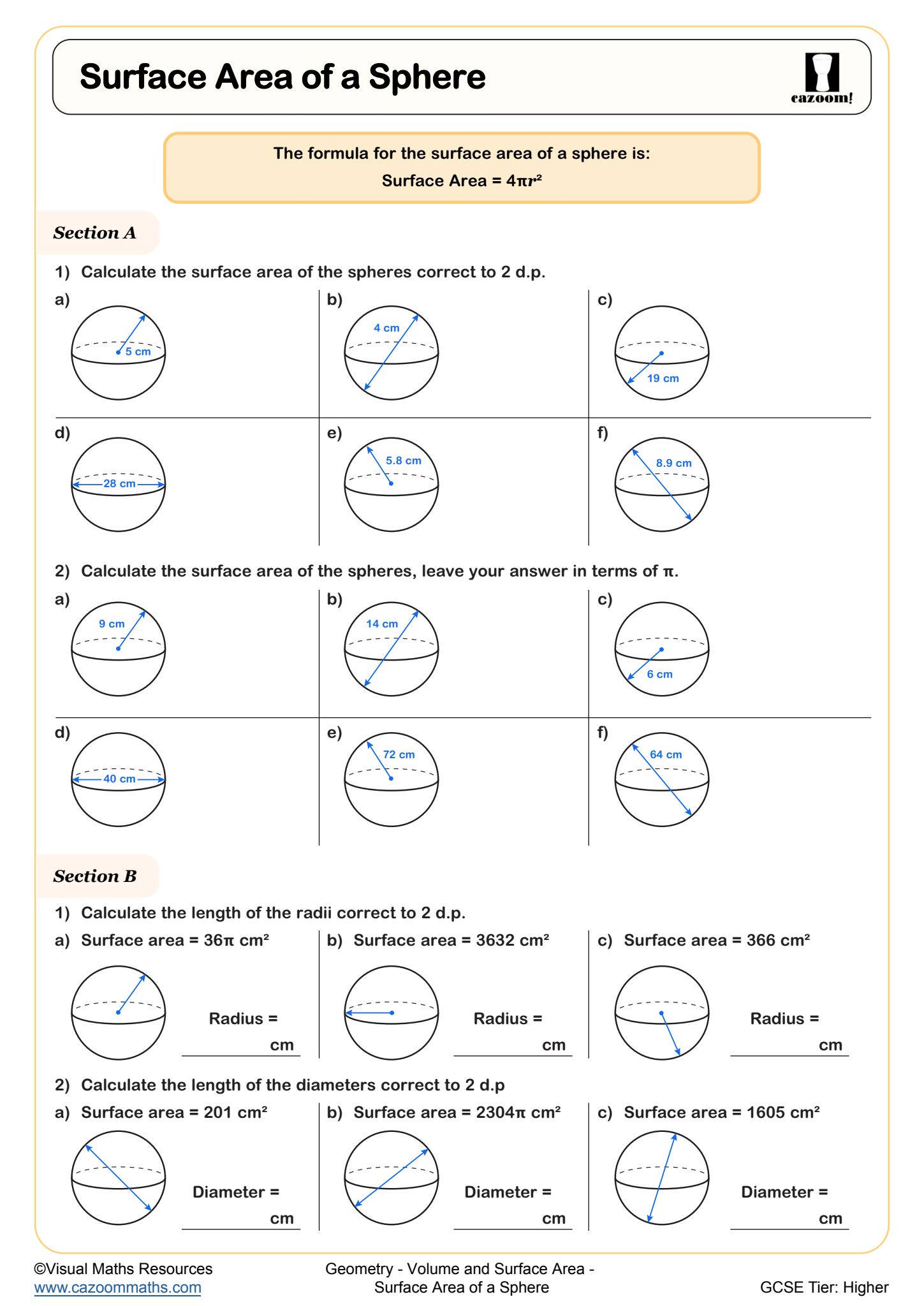
Surface Area of Cones and Spheres
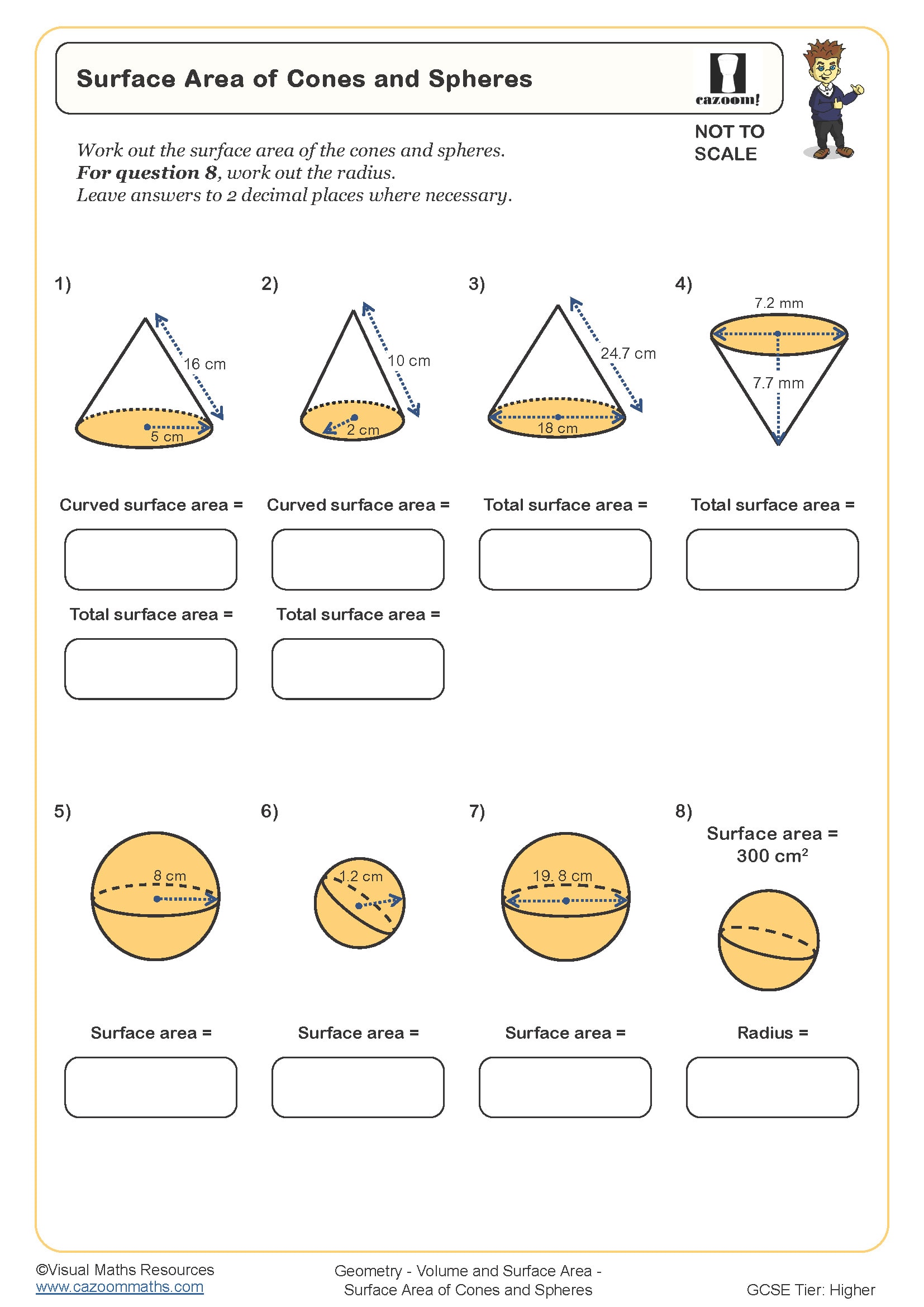
Surface Area of Conical Frustums
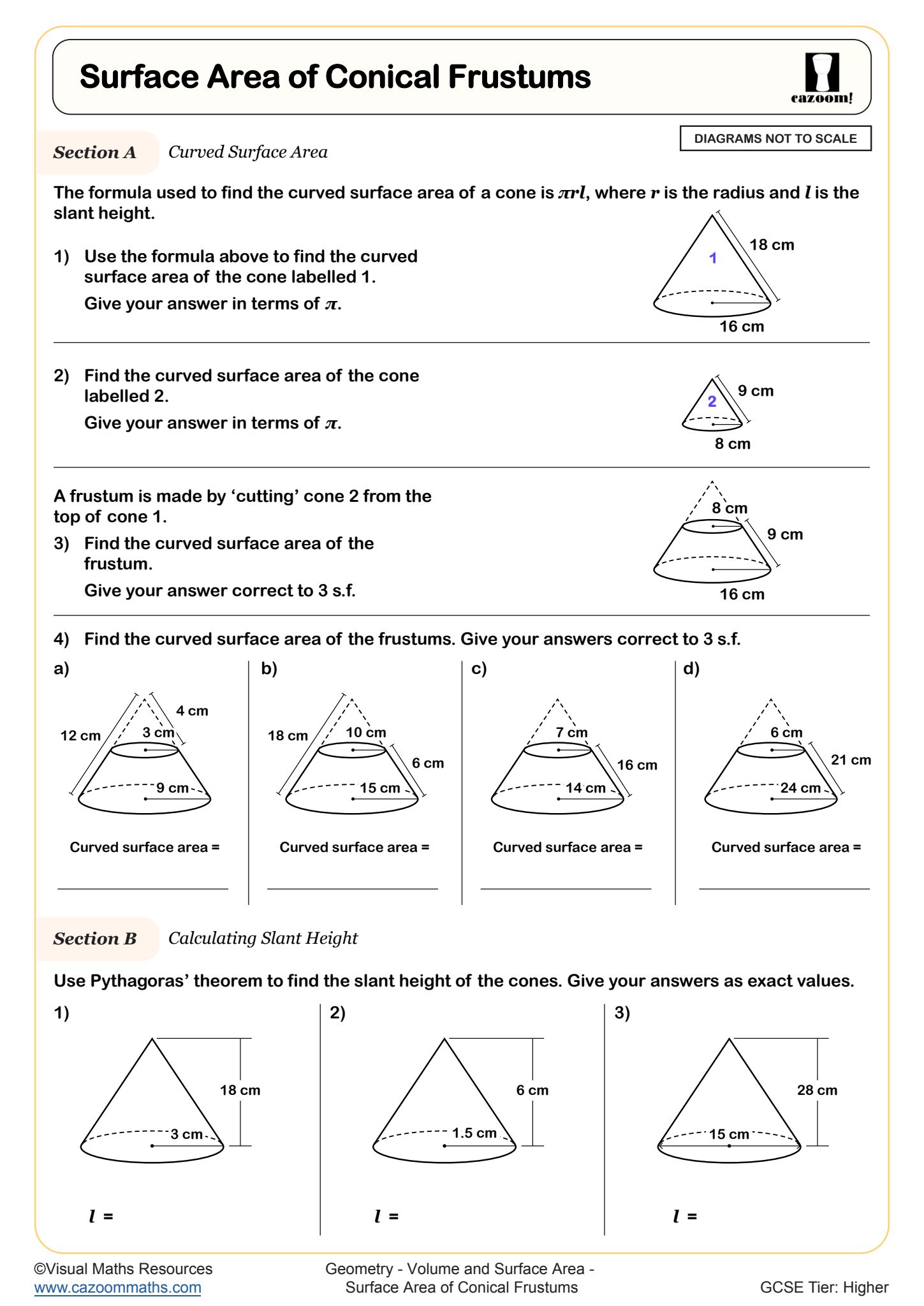
Surface Area of Cylinders
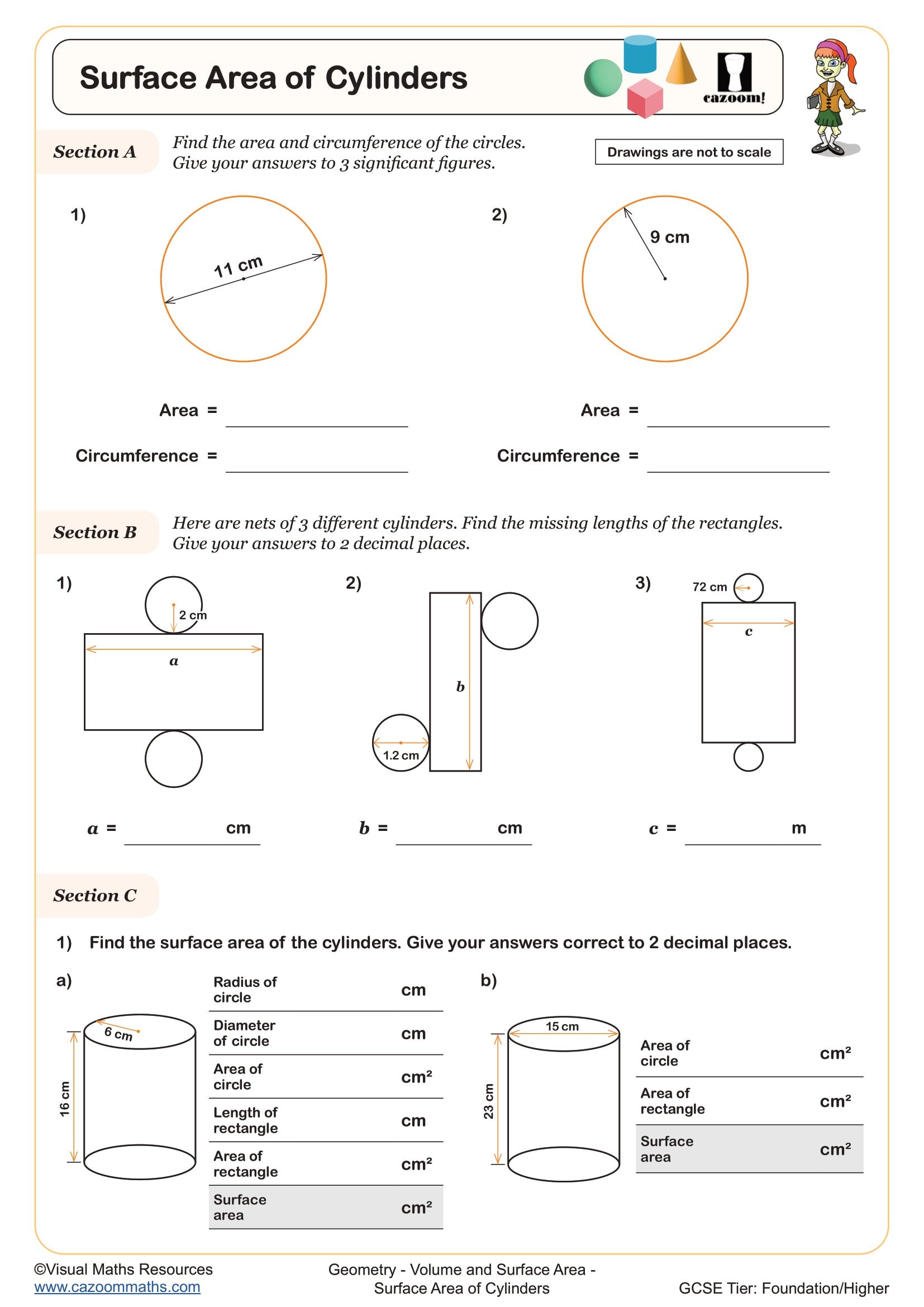
Surface Area of Prisms
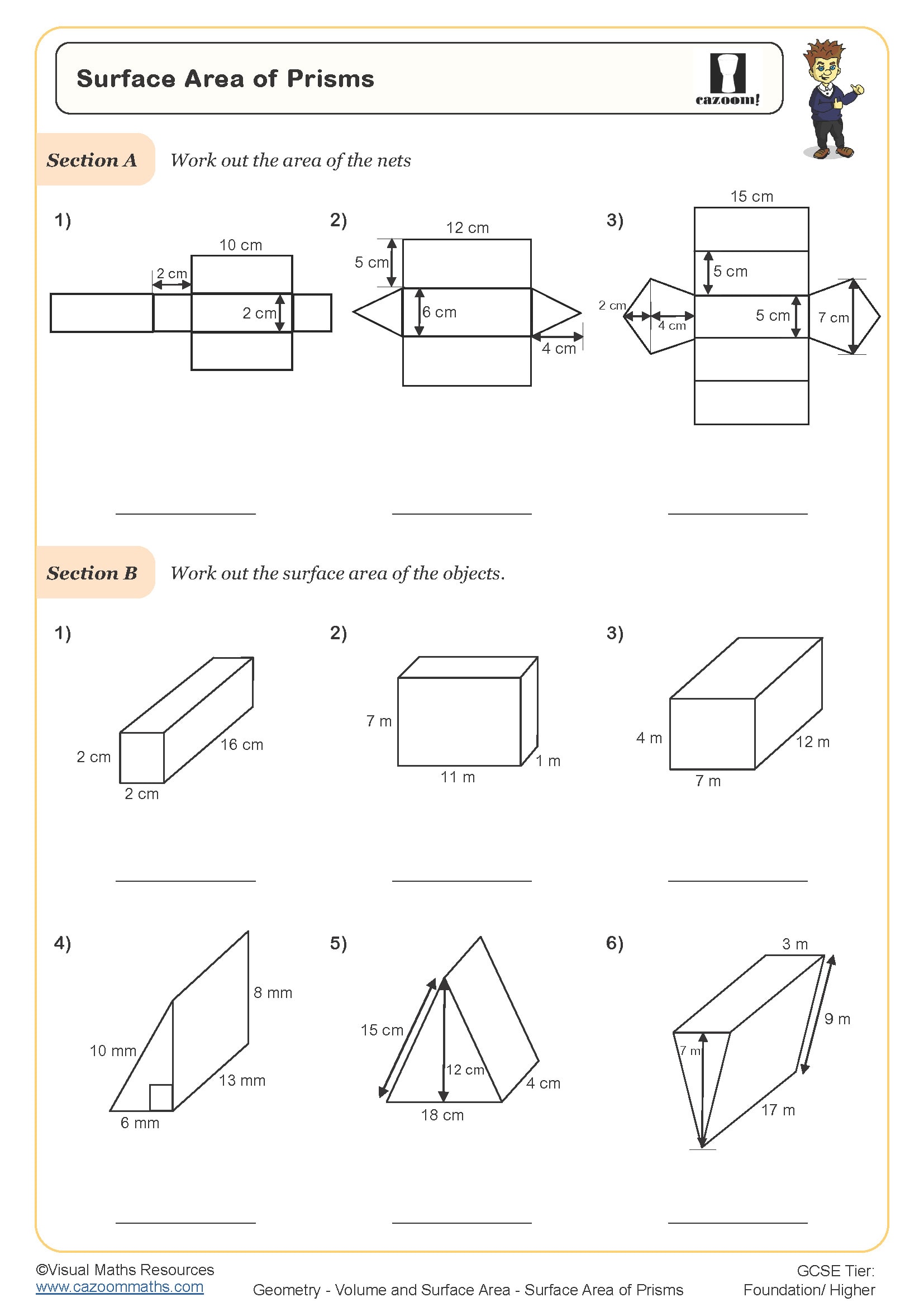
Surface Area of Pyramids
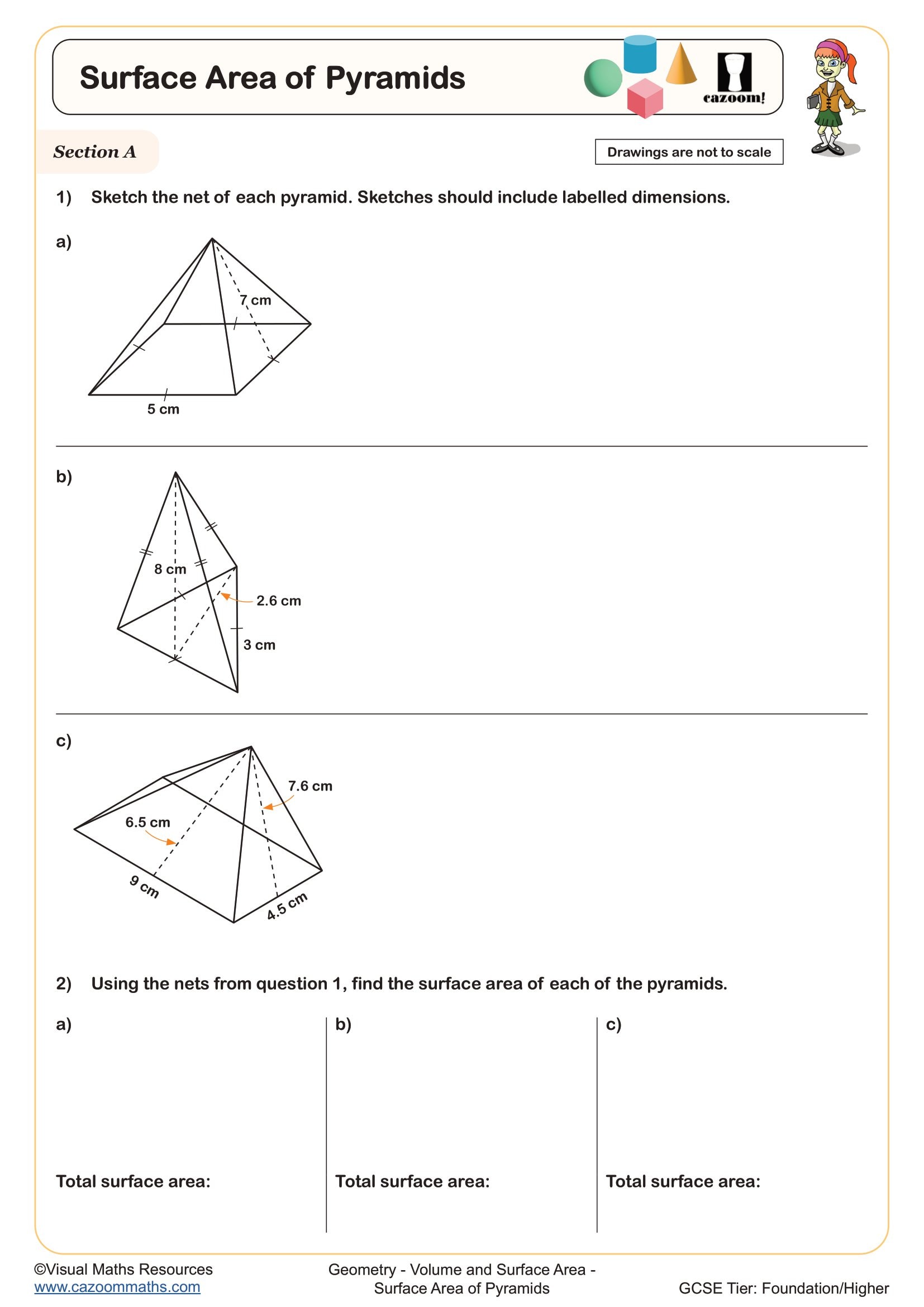
Surface Area of Triangular Prisms
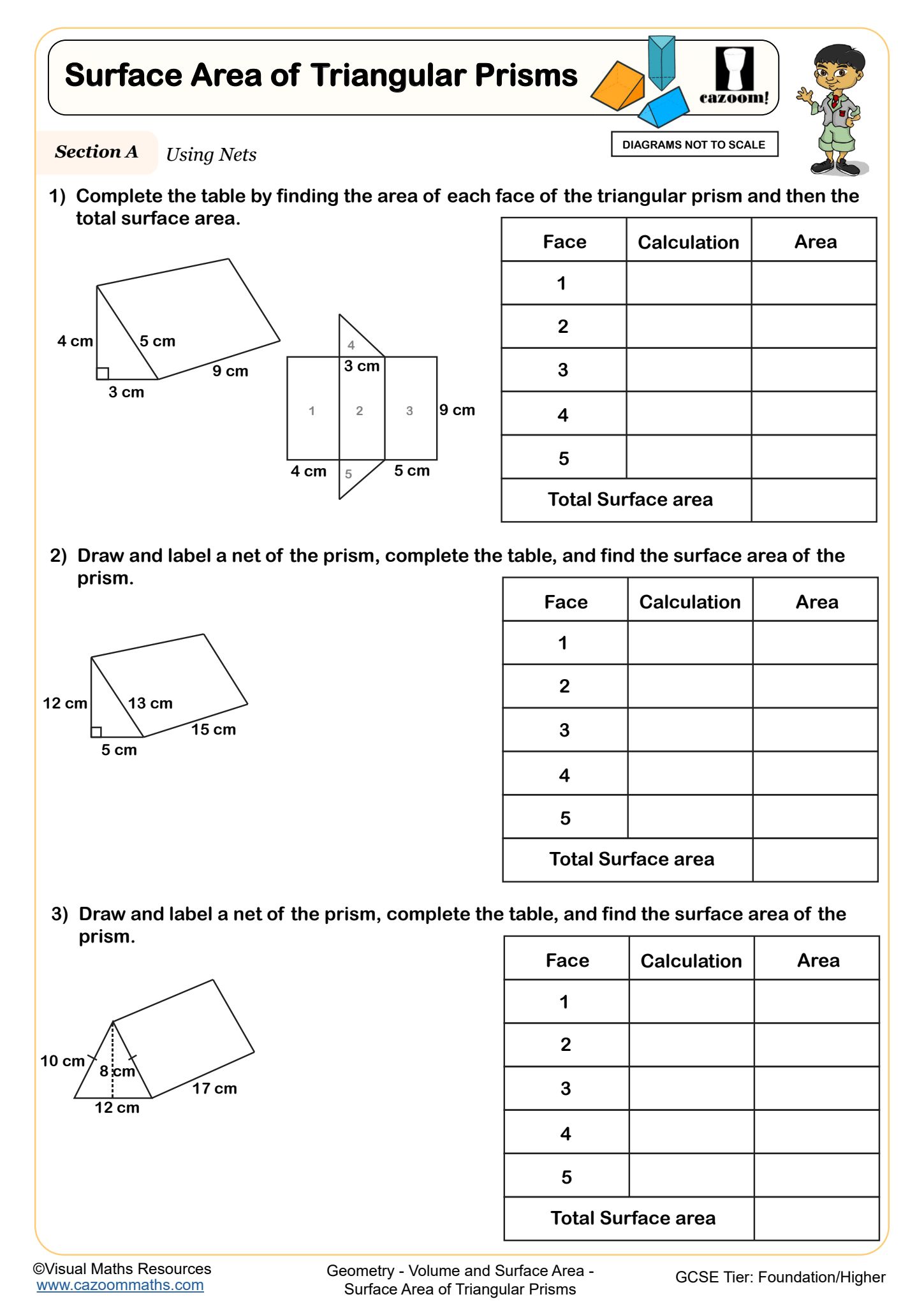
Surface Area- 'L' Shaped Prisms
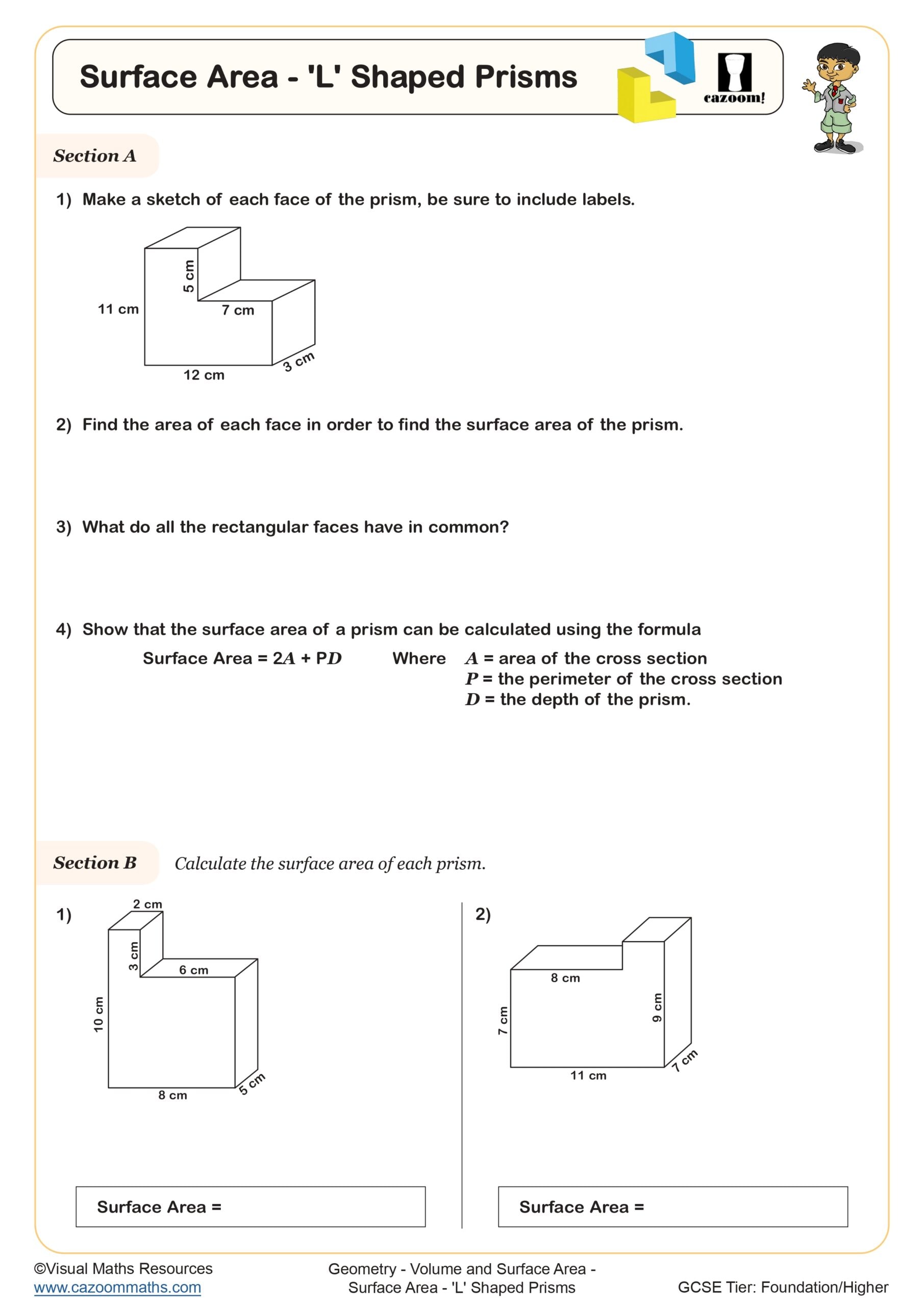
Volume and Surface Area of Cones and Spheres
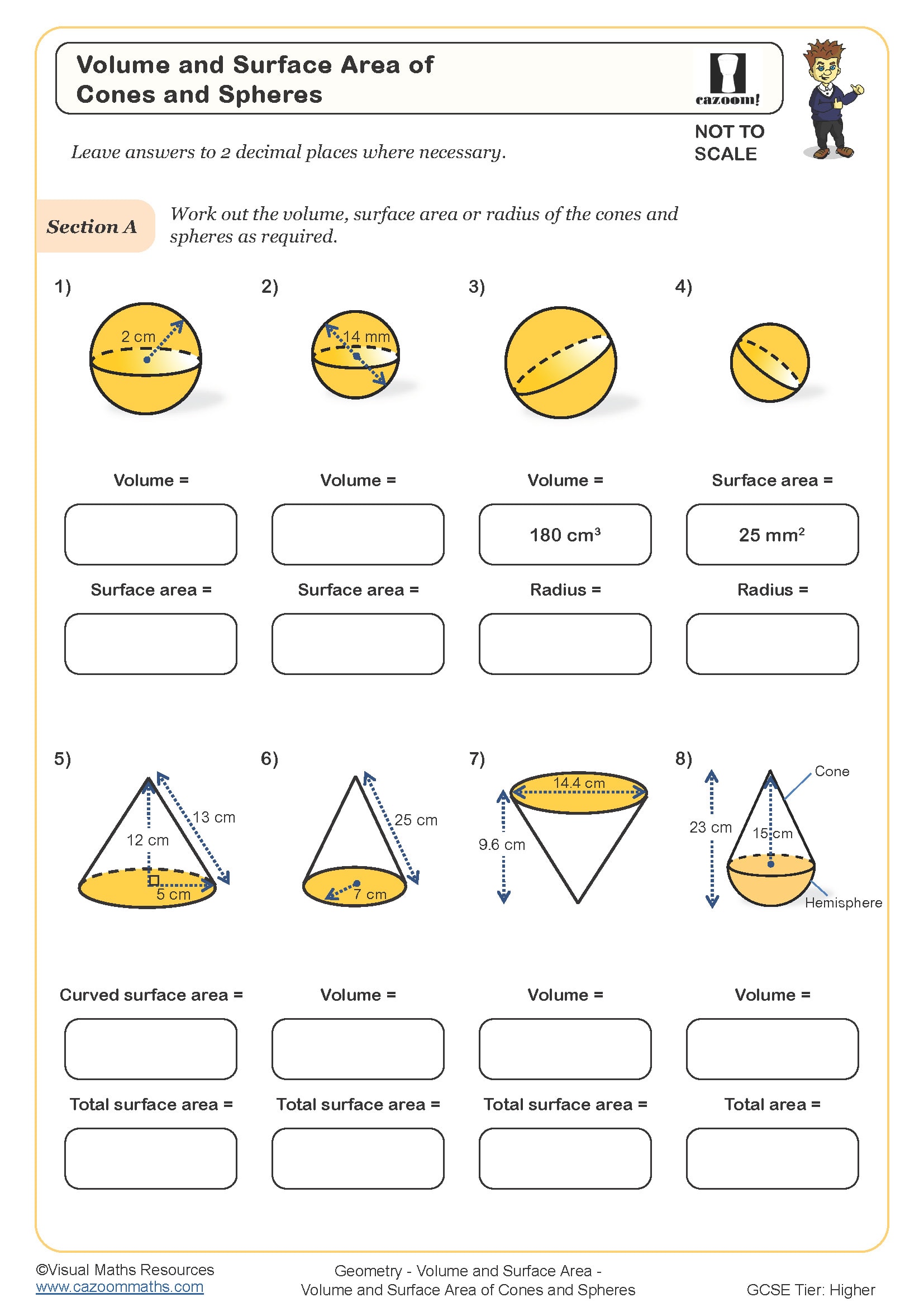
Volume of a Cone
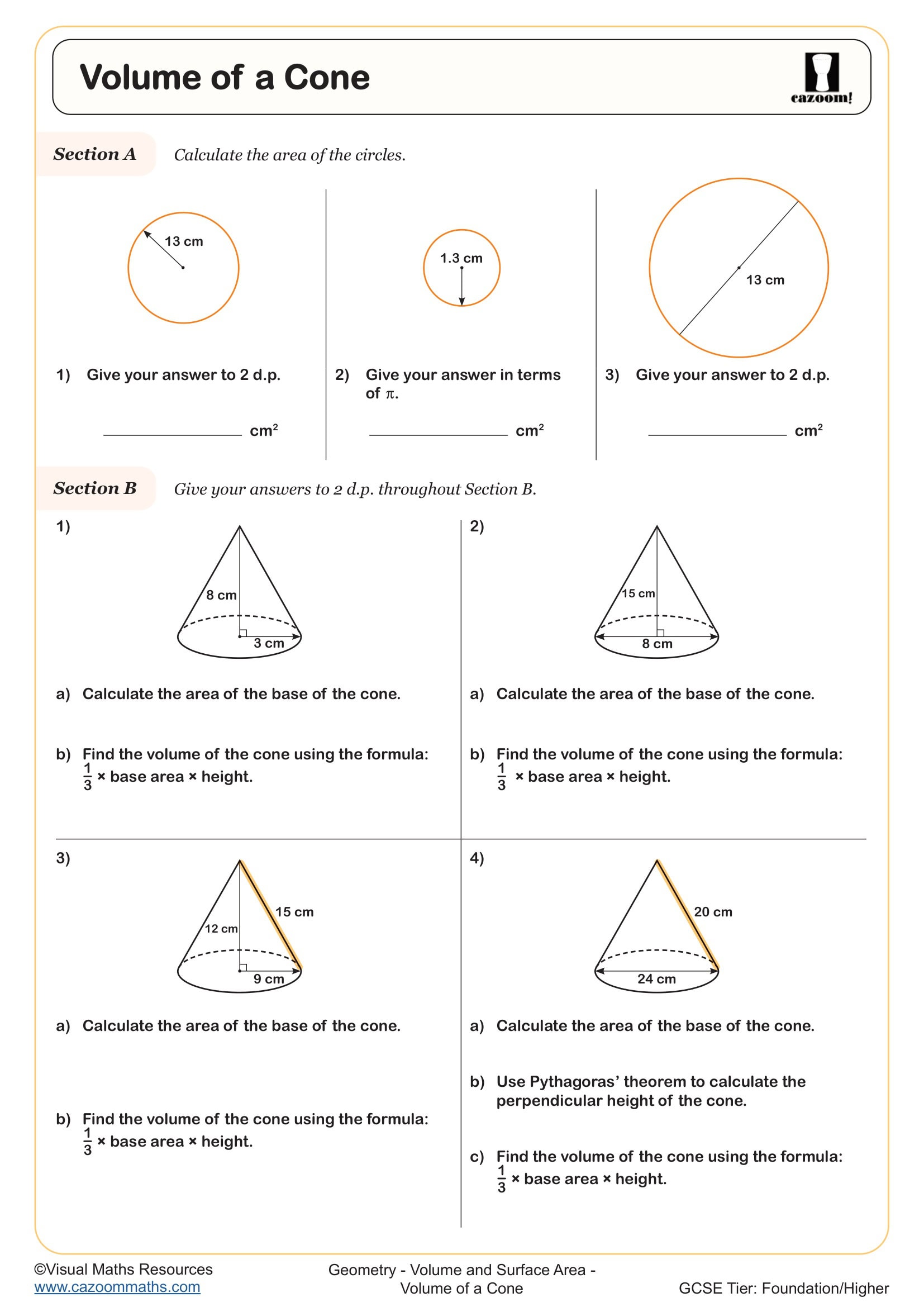
Volume of a Cylinder
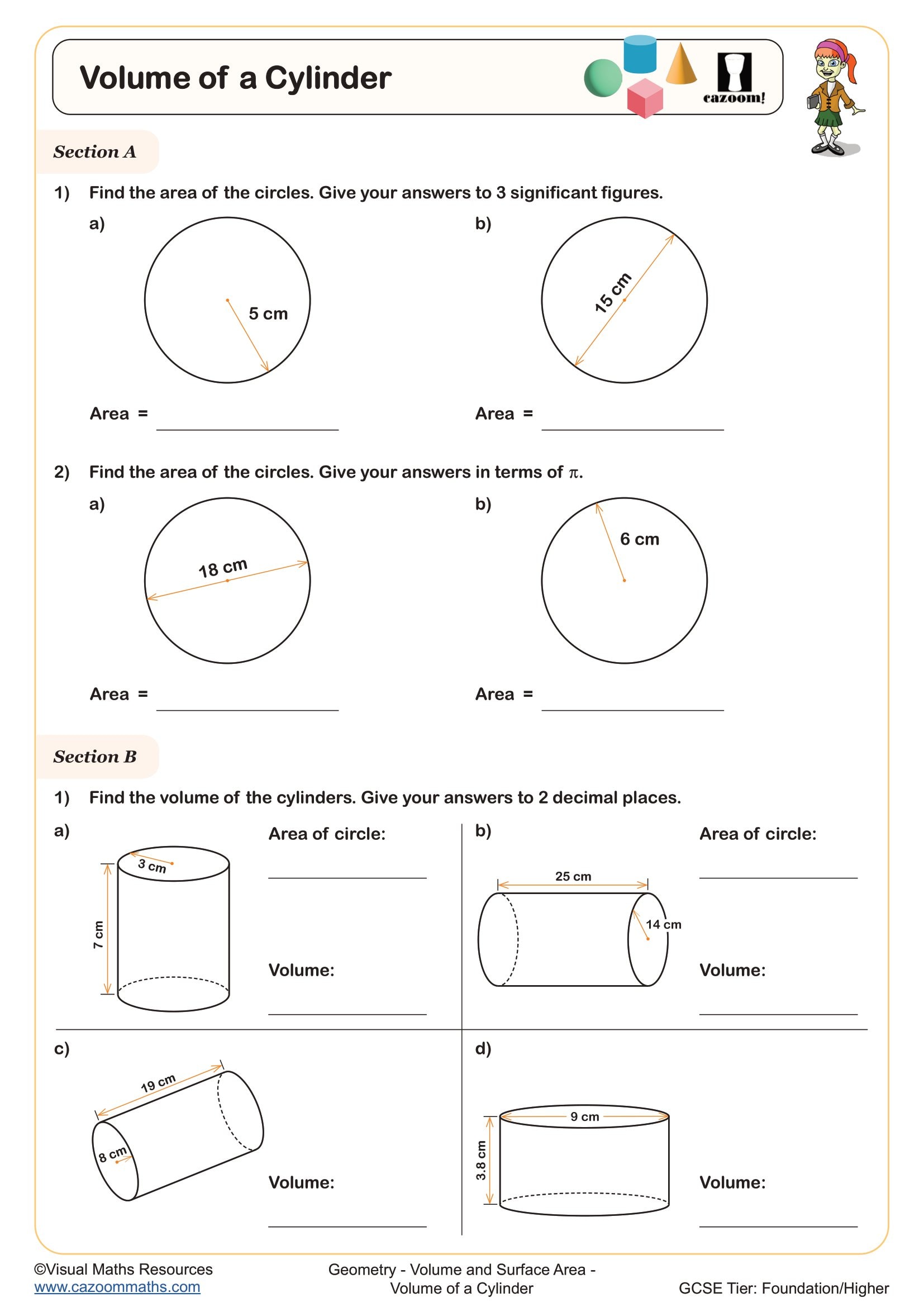
Volume of a Pyramid
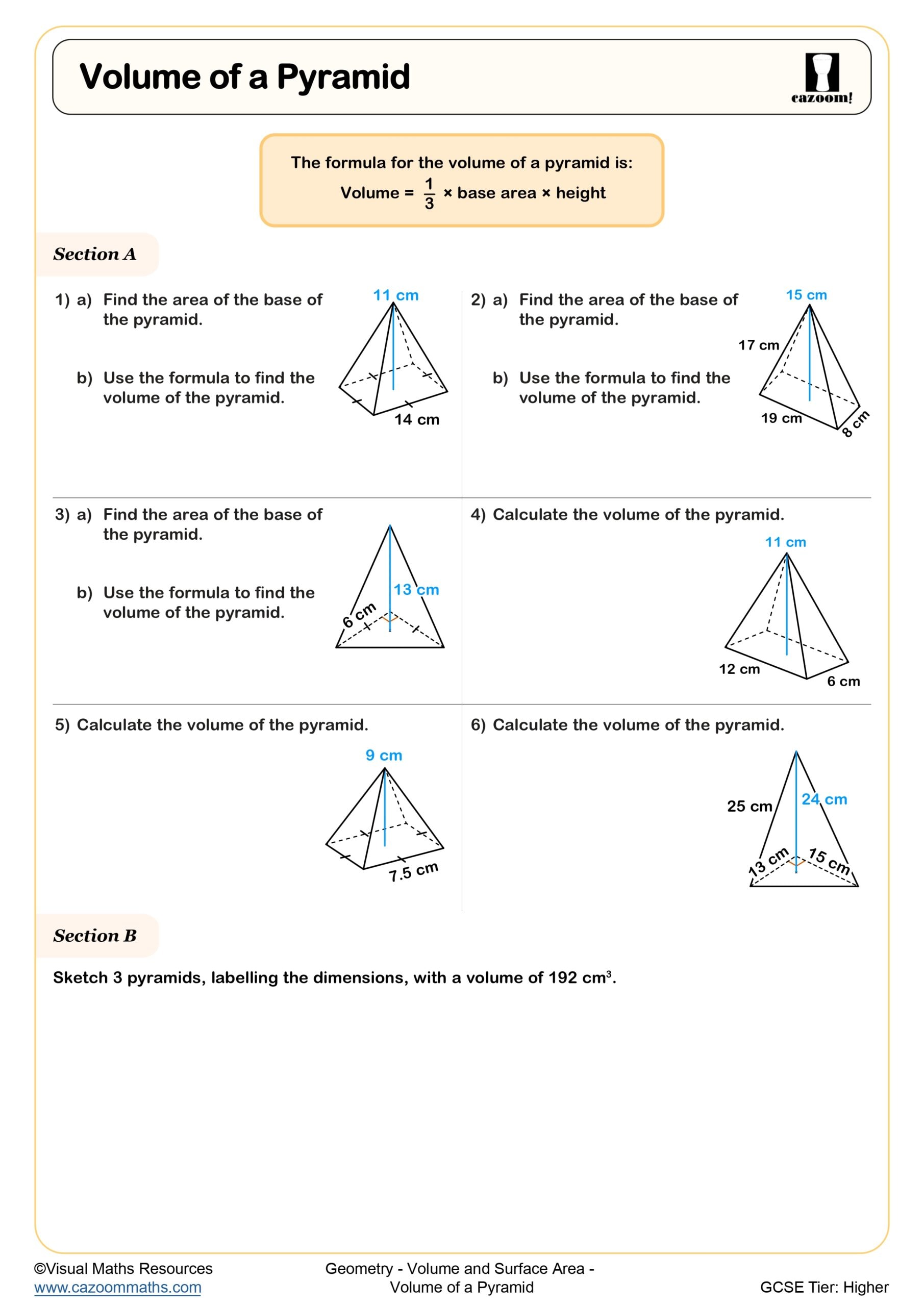
Volume of a Sphere
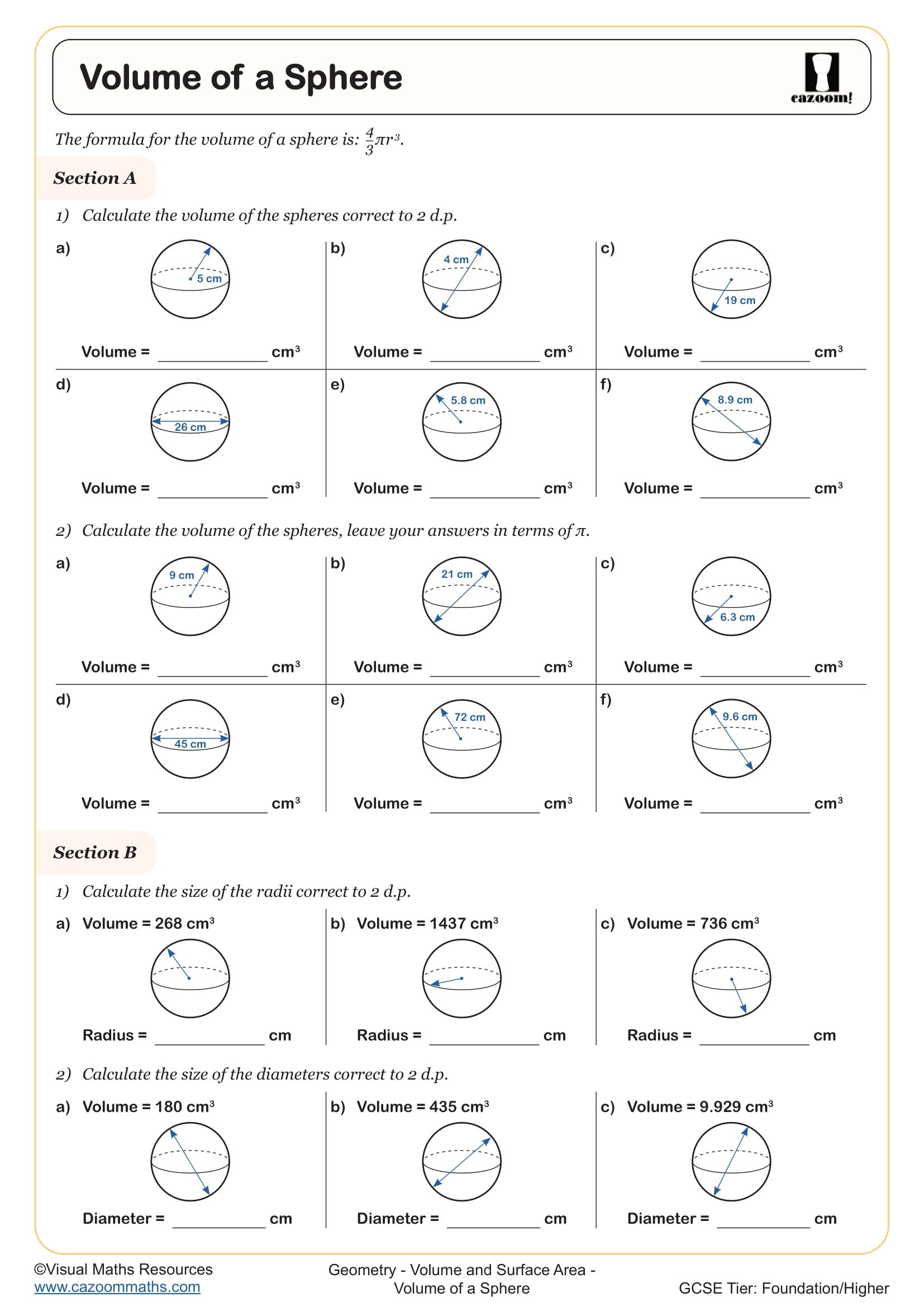
Volume of Compound 3D shapes
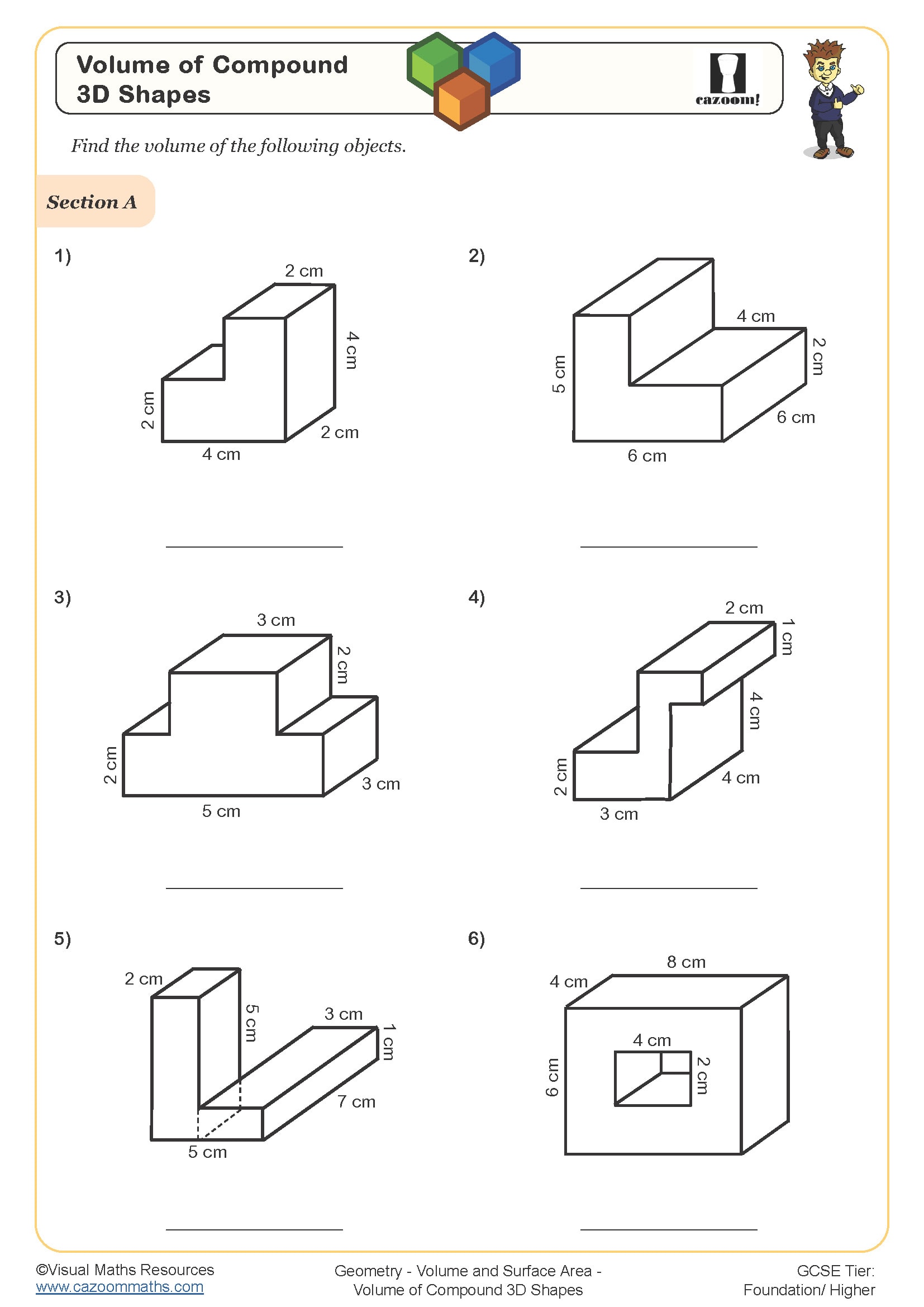
Volume of Conical Frustums
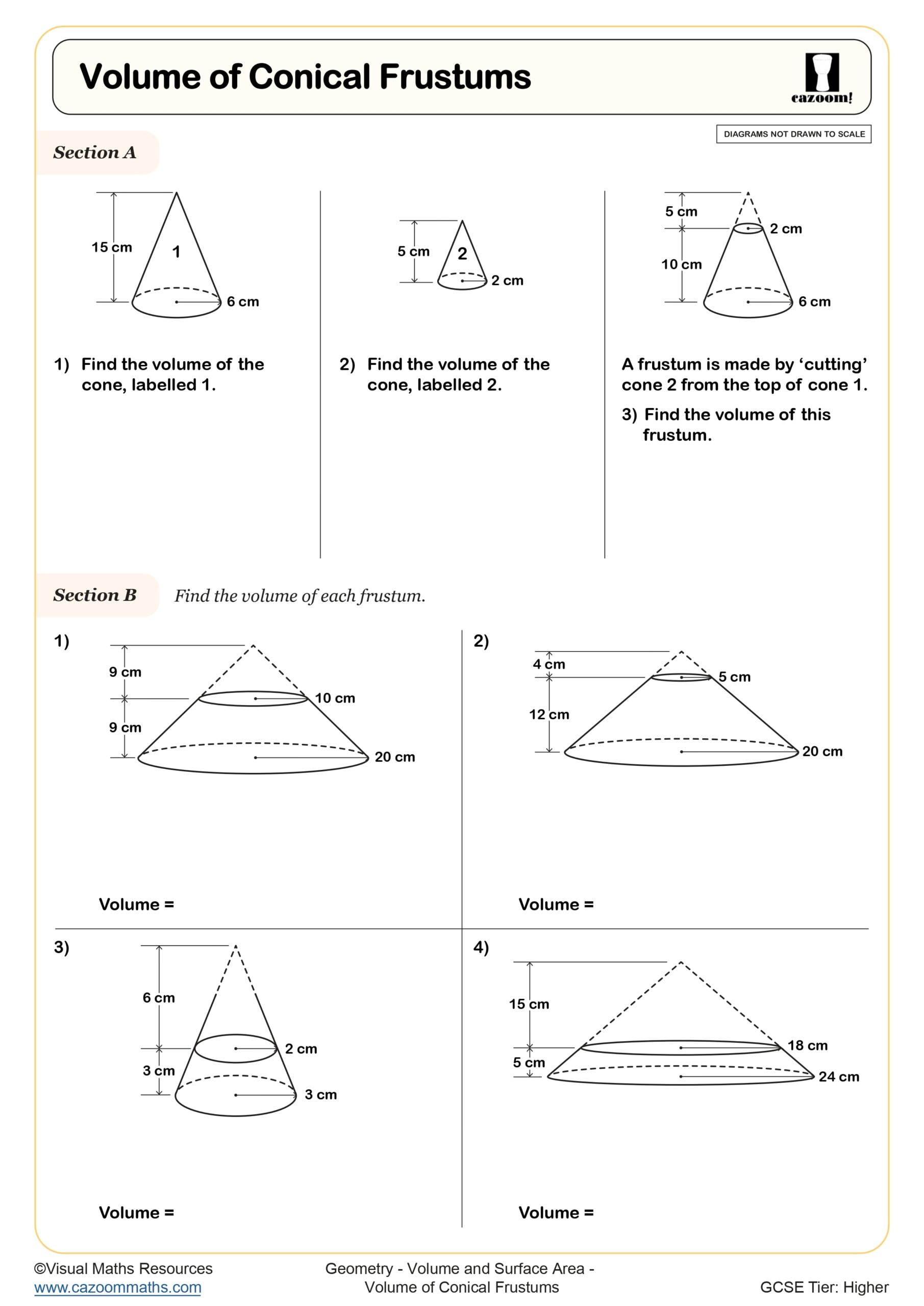
Volume of Pyramids and Cones
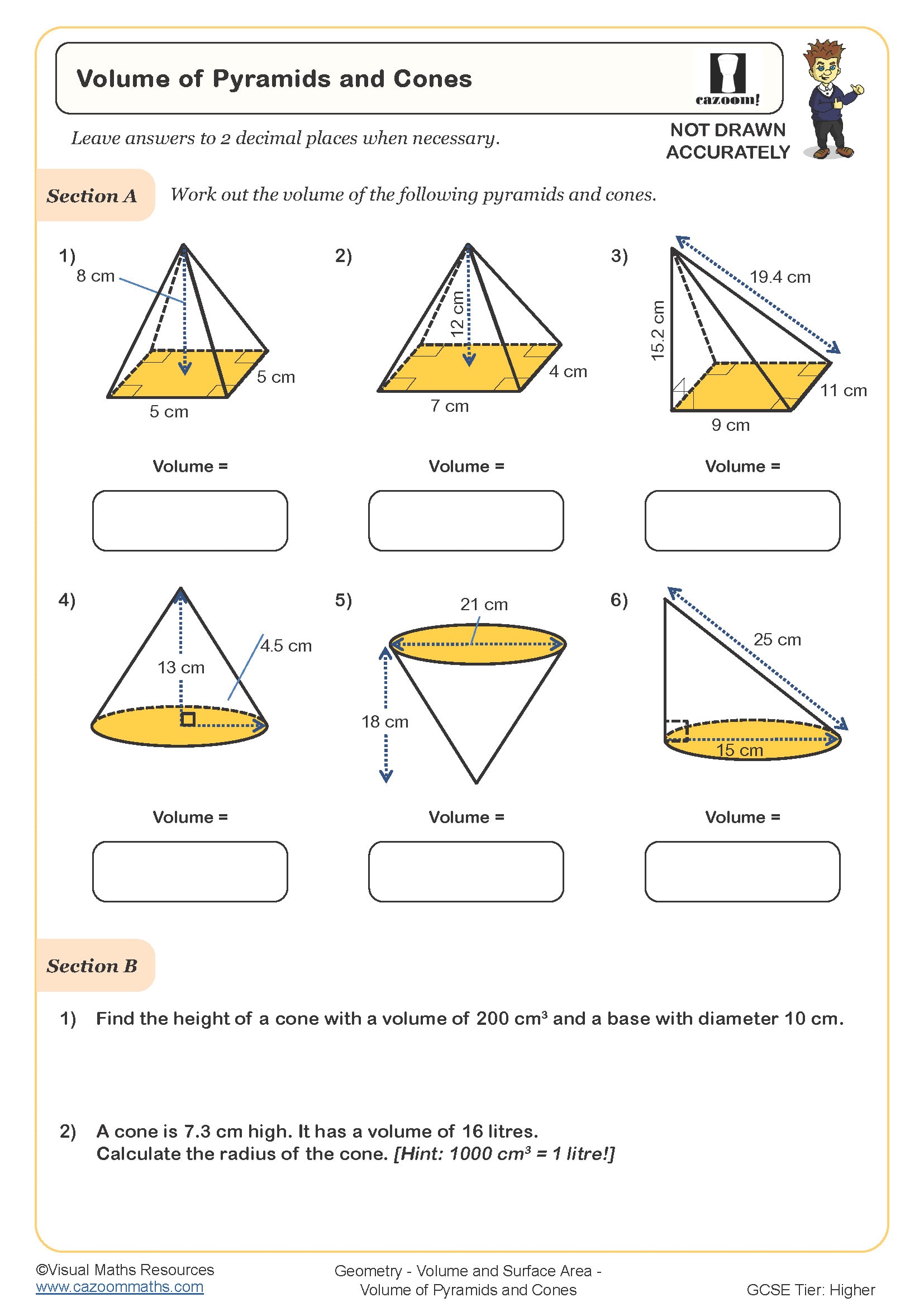
Volume of Pyramids Cones and Spheres
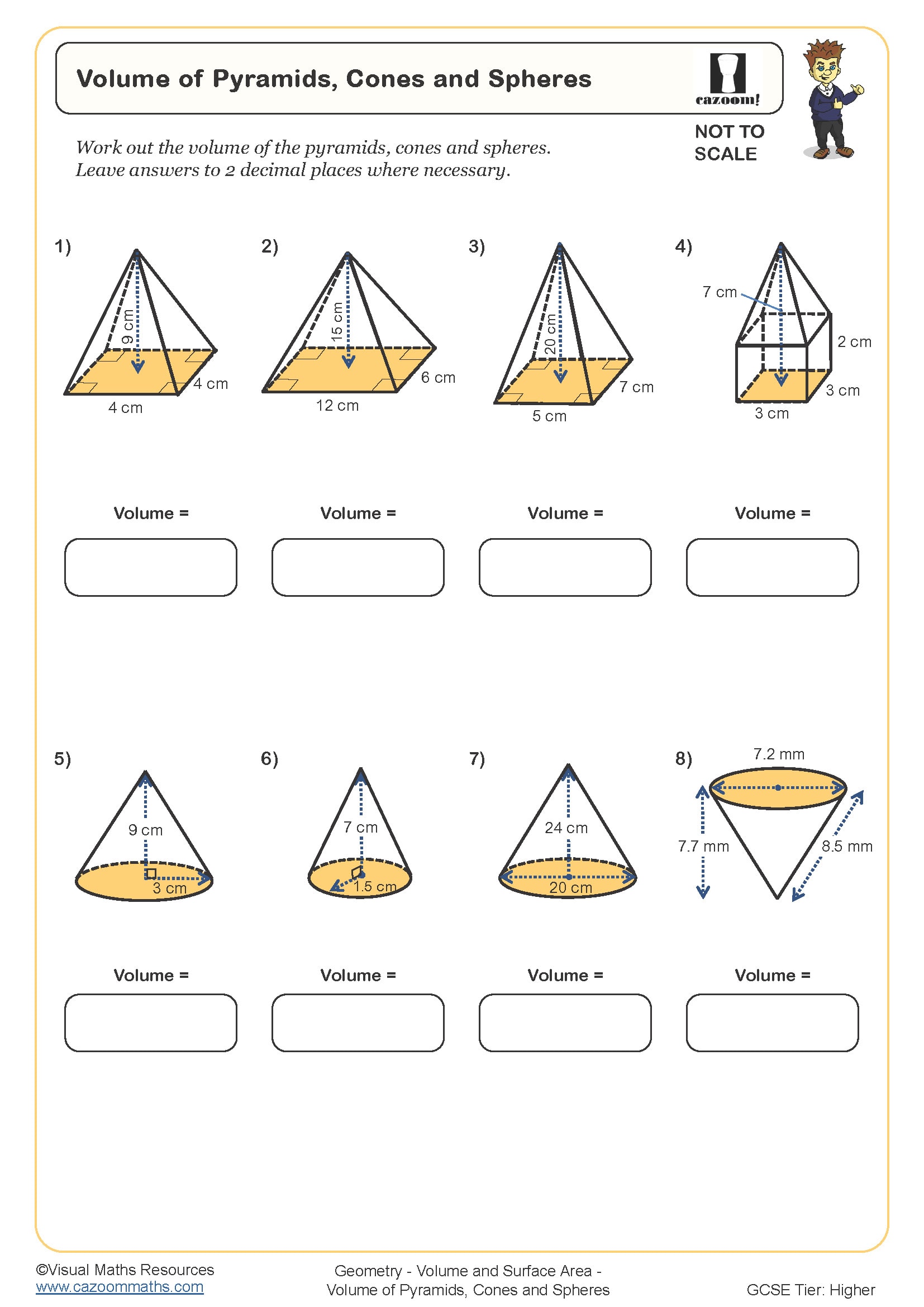
Volume of Square-based Pyramid Frustums
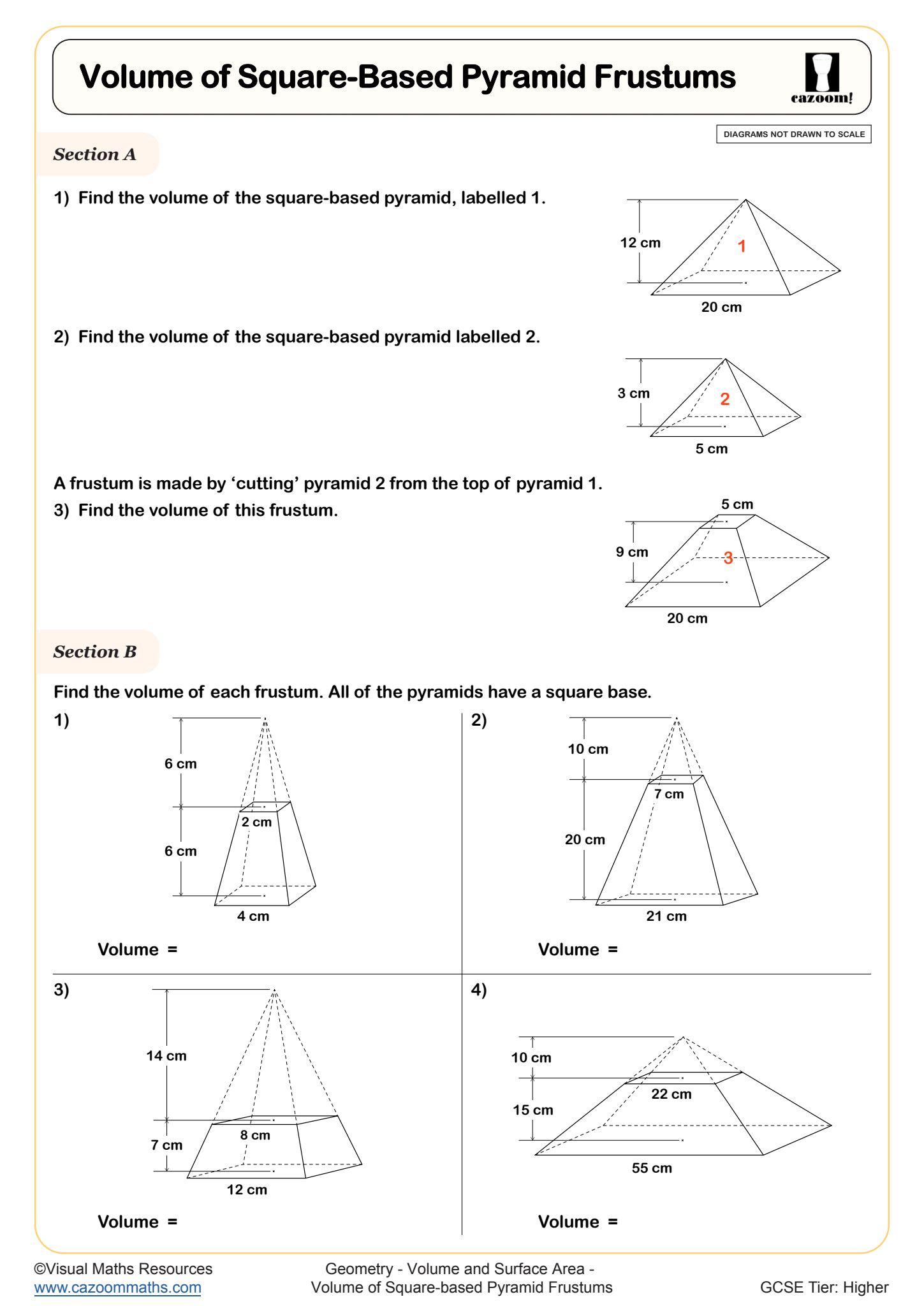
Volume Word Problems
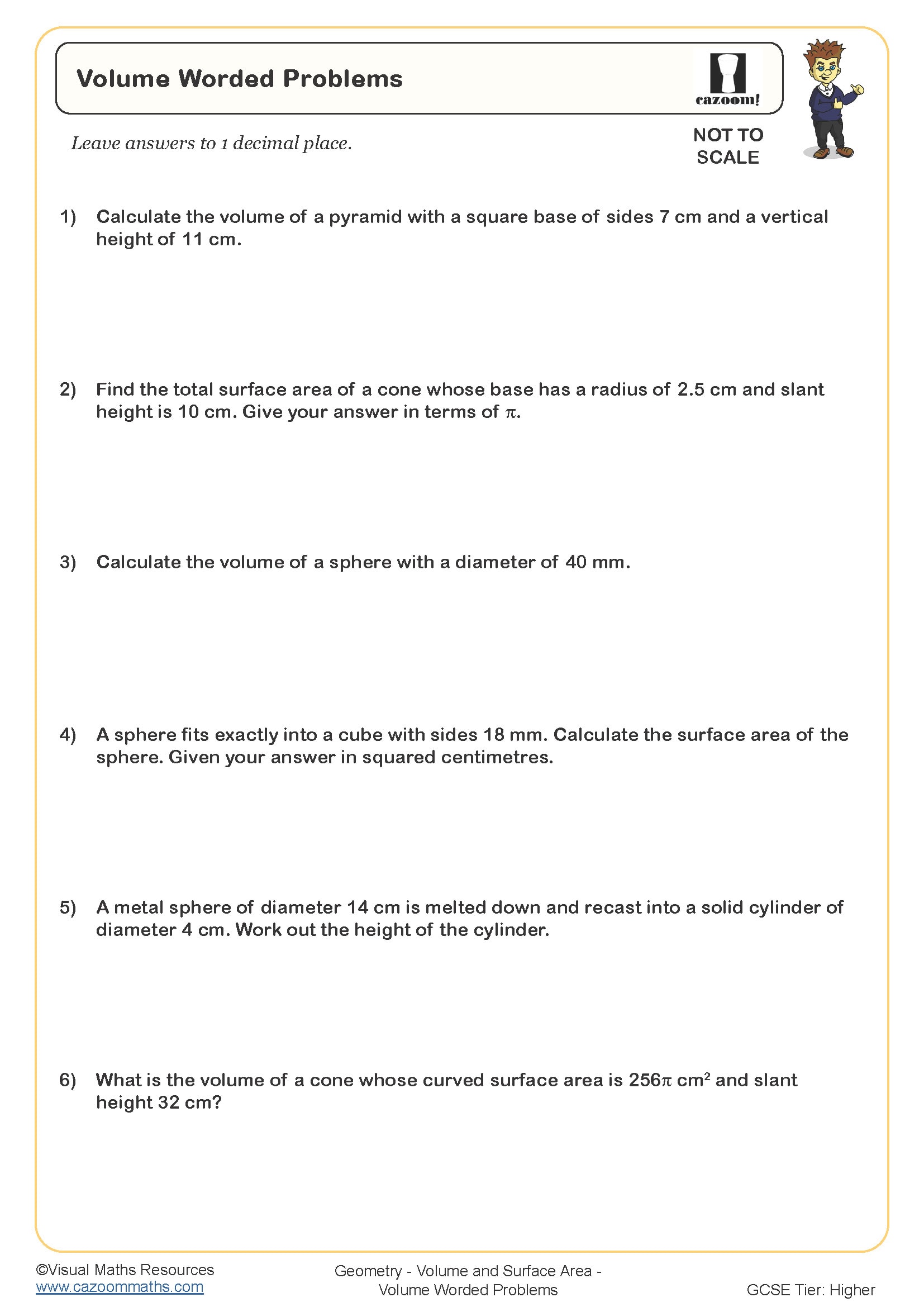
Complete Formula Sheet for Surface Area and Volume with Step-by-Step Examples
Finding quality resources that actually explain the thinking process can be frustrating. These worksheets include a comprehensive formula sheet for surface area and volume alongside detailed worked examples that show students exactly how to approach each problem type. We've covered everything from basic cuboids and cylinders to more challenging composite shapes. The step-by-step solutions help students understand the logic behind each calculation, not just memorise formulas.
What Skills Are Covered in These Year 10 Surface Area and Volume Worksheets?
We've packed quite a lot into these worksheets! Students start with identifying 3D shapes and their properties before progressing to calculating surface areas and volumes of increasingly complex forms. The progression includes basic prisms, cylinders, spheres, and challenging composite shapes. Students particularly enjoy the real-world problems (surprisingly useful for engagement). Each worksheet builds on previous knowledge while introducing new concepts at a manageable pace.
Why Year 10 Students Need Surface Area and Volume Practice Worksheets
Here's what we've noticed in classrooms: students who get regular practice with surface area and volume problems perform significantly better in their GCSE assessments. The connection between consistent practice and confident performance is undeniable. These worksheets provide the repetition needed to master formula selection and application, plus they help students recognise different problem types quickly during exams.
• Build formula fluency - Students learn to select the correct formula automatically
• Develop spatial reasoning - 3D visualisation skills improve with practice
• Master composite shapes - Breaking complex problems into simpler parts
• Strengthen exam technique - Practice with GCSE-style questions and mark schemes
• Boost confidence - Success with easier problems builds momentum for harder ones
Real-World Applications Where Students Use Surface Area and Volume Skills
Students always ask, "When will I ever use this?" – and honestly, these skills pop up more than you'd expect. From calculating paint needed for decorating projects to determining storage capacity in design technology, surface area and volume calculations are genuinely useful. It's actually quite satisfying when students make these connections themselves and realise the practical value of their mathematical learning.
• Construction and architecture - Calculating materials needed for building projects
• Engineering design - Determining capacity and material requirements
• Art and design - Planning sculpture dimensions and material usage
• Science experiments - Measuring volumes for chemical reactions and density calculations
• Every day life - Working out packaging sizes, storage solutions, and home improvements
• Further mathematics - Foundation for A-level calculus and advanced geometry topics